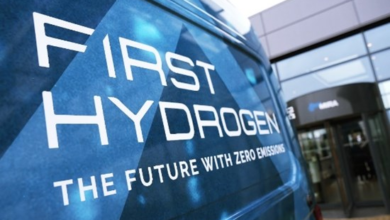Nu:ionic Technologies and XRG Technologies introduced a new development in hydrogen production technology

Nu:ionic Technologies (Canada), Inc. (“Nu:ionic”) and XRG Technologies, LLC (“XRG”) announced a jointly developed novel electrified furnace platform to be marketed under the Nu-X SM service name. Additionally, Nu:ionic announces the first commercial implementation of this technology in its Nu-X Smart ReformerSM, an electrified emission-free reactor for the production of low-carbon Teal Hydrogen™ using natural gas, renewable biogas, ammonia, or methanol as feedstock.
In conventional hydrogen plants, almost all emissions are generated in the fired heater of the steam methane reformer (SMR). This includes carbon emissions, as well as criteria air pollutants such as NOx, SOx, and particulate matter (soot). These emissions are eliminated in the Nu-X Smart Reformer.
The compact and modular Nu-X Smart Reformer is significantly less expensive and a fraction of the size of traditional SMRs at similar capacities, and able to scale to industrial production volumes. The highly efficient Nu-X Smart Reformer is designed for extended uptime and requires minimal maintenance due to an advanced proprietary software control system that enables remote monitoring, thus ensuring safe and reliable operation at peak efficiency. Modular, pre-engineered commercial scale units capable of up to 20 tonnes per day (TPD) hydrogen capacity are in production now and available for deployment immediately.
Nu:ionic’s low-carbon Teal Hydrogen process reduces natural gas feedstock requirements by up to 40%, resulting in a significant reduction in combustion emission, as well as emissions associated with upstream gas exploration and transmission leakages. The plant’s carbon emissions can be further reduced by combining with Nu:ionic’s carbon capture solution, resulting in hydrogen with up to a 90% lower carbon footprint as compared to conventional SMR processes. When used with renewable biogas feedstock, further reduction of the carbon intensity of the hydrogen is achieved.
“We identified a market opportunity for end users seeking distributed scale, low-cost and low-carbon hydrogen production below 100 TPD capacity. Nu:ionic is fulfilling this need by providing a “better than blue” hydrogen alternative to more costly production pathways with the zero-emission Nu-X Smart Reformer platform,” said Jan Boshoff. “We’re excited to collaborate with XRG Technologies on this important development and could not have asked for a stronger partner. XRG’s deep experience and rigorous fundamentals-first approach to the design, optimization and manufacture of furnaces made them a natural fit for this joint development. The Nu-X platform allows our clients to move off the drawing board and begin implementing decarbonizing technologies today.”
“XRG is thrilled to announce our partnership with Nu:ionic in pioneering the future of sustainable heating solutions. Together, we are embarking on an exciting journey to revolutionize the industry by developing an electric heater that will not only surpass traditional fired heaters in efficiency but also significantly reduce environmental impact,” said Erwin Platvoet.
He added “This collaboration signifies our shared commitment to innovation, sustainability, and meeting the evolving needs of our customers. We look forward to leveraging our combined expertise to bring this groundbreaking technology to market and make a positive difference in the world.”
With the addition of the Nu-X Smart Reformer and technology platform to its portfolio, Nu:ionic takes another step forward in achieving its vision to electrify industrial processes while providing end-users more flexibility in the production capacity of low-cost, low-carbon Teal Hydrogen.
In addition to Nu-X, Nu:ionic continues to develop its industrial microwave platform for electrification, which includes the Microwave Catalytic Reformer™ (MCR™). Nu:ionic’s MCR technology provides precise, immediate and highly efficient targeted heating which eliminates the need for fuel combustion and resulting emissions, and accommodates low-cost hydrogen carriers such as renewable methanol, biogas, or natural gas.
